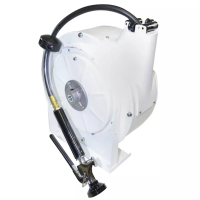Instruction Manual
D101554X012
Vee-Ball Valves
June 2017
30
6. Insert the drive shaft into the valve body bearing (key 10), and into the ball ear (or ball, for Micro‐Notch
constructions). Align the hole in the drive shaft with the holes in the ball.
Note
There is an indicator hole drilled in all Micro‐Notch balls. This indicator hole must be oriented closest to the follower end of the
ball/shaft assembly. See figure 19.
7. Insert the taper pin into the ball and drive shaft as shown in figures 20 and 21. The small end of the taper pin must
be inserted into the larger hole side of the ball ear (or ball, for Micro‐Notch constructions), and into the large hole
side of the drive shaft.
Note
The taper pin will not fit correctly if inserted in the wrong direction through the ball ear (or ball, for Micro‐Notch constructions) or
through the drive shaft. Make sure the drive shaft and ball ear (or ball, for Micro‐Notch constructions) are in the correct orientation
for installing the pin.
D Installing Taper Pins in NPS 1, 1-1/2, and 2 Valves
Note
For NPS 1, 1-1/2, and 2 valves, the taper pins (figure 20) do not require welding.
Using a flat‐end punch, drive the taper pin into the ball ear (or ball, for Micro‐Notch constructions) and drive shaft until
solid heavy contact is felt. Make sure the taper pin spans the width of the ball.
Using a flat end punch, drive the groove pin (key 7) into the ball and follower shaft until it is flat with the ball surface.
Installing the Drive Shaft in VTC Ceramic Vee‐Ball Valves
CAUTION
The drive shaft must be used with the correct Vee‐Ball. Refer to the tag (see figure 13) attached to the Vee‐Ball and to the
drive shaft.
Failure to use the correct Vee‐Ball/ shaft combination may result in the ball not being in the position indicated by the slash
mark on the end of the shaft. If the ball is not properly aligned with the slash mark, the valve will not function correctly and
seal damage may result.

